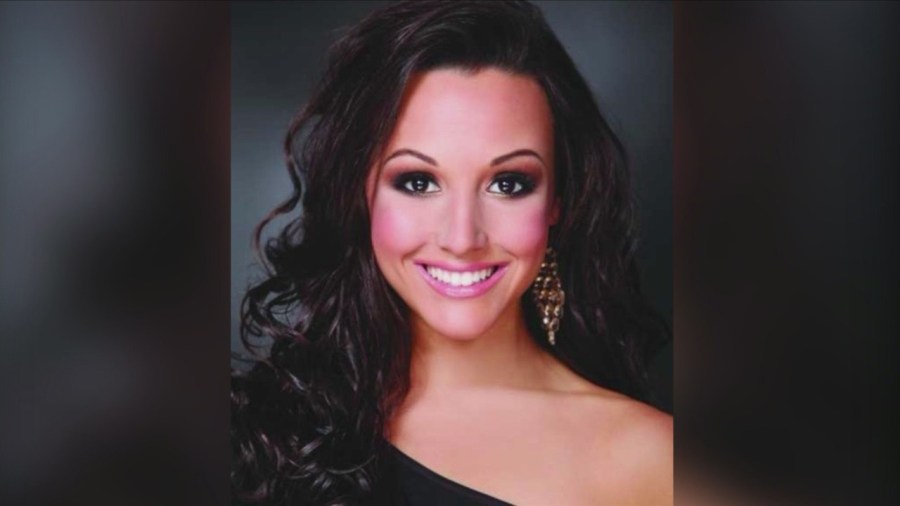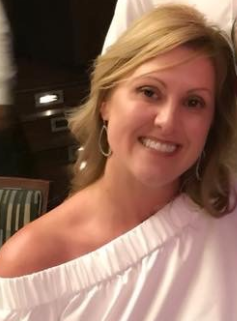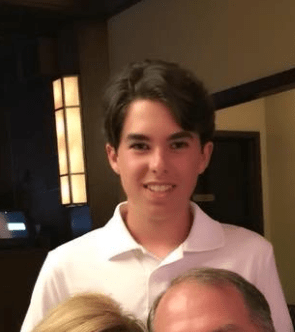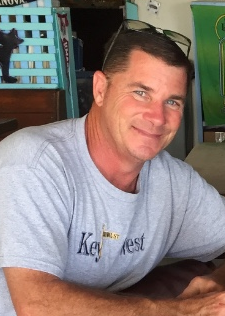LAFAYETTE, La. (KLFY) — While a final report is likely still a few months away, the National Transportation Safety Board has released 29 documents detailing the December 2019 crash of a private plane near a Lafayette post office.
Five were killed and four people were injured in the Dec. 28, 2019 plane crash along Feu Follet Rd. shortly after the plane’s takeoff from Lafayette’s airport. Only one of the six people on board survived. The remainder of the injured survivors were bystanders. The plane was en route to the Peach Bowl playoff game in Atlanta between LSU and Oklahoma. Among those killed was sports broadcaster Carley McCord, the daughter-in-law of LSU coach Steven Ensminger.
The documents released this week include a number of highly technical investigations of the airplane, a Piper PA 31T owned by Cheyenne Partners LLC. They also include summaries of interviews with the wife of the deceased pilot, Ian Biggs, and with the lone survivor of the crash, Wade Berzas. Other documents include pictures of the plane’s flight path, witness reports and extensive factual reports from air traffic controllers, weather reports from the day of the crash, and extensive cataloging of the plane’s remains.
What is not included is a final probable cause of the crash, which NTSB officials tell News 10 will be included in the final report likely to be released near the year’s end.
Those killed in the crash included:
- Ian E. Biggs, white male, the plane’s pilot, age 51
- Robert Vaughn Crisp II, white male, age 59
- Carley Ann McCord, white female, age 30
- Gretchen D. Vincent, white female, age 51
- Michael Walker Vincent, white male, age 15
Survivor tells story of crash
One of the documents includes a summary of an interview with Wade Berzas, the lone survivor of the crash.
Berzas told the NTSB “he sat in the aft, forward-facing seat on the left side of the airplane. The other male passenger (Crisp) sat in front of him on the left side. The two female passengers (McCord and Gretchen Vincent) were in the right-side forward and aft-facing seats. The younger male passenger (Michael Vincent) was seated in the co-pilot seat.”
Berzas said he buckled his seatbelt and did not notice anything out of the ordinary, though he noted Biggs did not provide a safety briefing prior to the flight.
“The engine start, taxi, and takeoff roll were completely normal; nothing was out of the ordinary based upon his previous flights,” stated the NTSB summary. “The takeoff roll and rotation seemed completely normal.”
Berzas, who had flown in the same plane 8-10 times before with Biggs, said he felt the plane climbing as he had many times before. He said Biggs was known to take off, stabilize the plane and then “climb aggressively.” Cloudy conditions that day meant Biggs was making an attempt at getting above the clouds.
Berzas reported “a bit of a jolt or pitching moment” and Crisp made a comment that the plane was going up. Berzas noted that the jolt was harder than he was used to. At the time, the plane was into cloud cover. No abnormal sounds were reported, nor did he report any comments from the cockpit. He did note, however, that he did not have a clear view of the cockpit and could not see what Biggs was doing.
Moments later, according to Berzas, Crisp remarked “We are going down, people.”
“At that moment Mr. Berzas looked out the window and saw a glimpse of the ground for a moment – he recalled that there was no time to think or react,” stated the report. “He recalled that it still felt like the airplane was climbing right up to the point where the impact sequence started.”
Berzas, a firefighter who had previously trained for moments just like this one, “braced for impact, grabbed his seat belt buckle and tucked his head down … During the initial impact sequence, [Berzas] heard lots of noise and crunching; he never heard anything from the other people on board.”
When the plane struck the ground, there was a fireball from the right side of the plane, Berzas stated. Berzas held his breath and kept his head down as the airplane slid and came to a stop. Berzas was hanging upside down at this point and had hurt his right arm. He unbuckled himself with his left arm and walked away from the airplane. A bystander on the scene helped Berzas get away from the wreckage.
Witnesses say plane sounded like it was at ‘full throttle’
Another document released by the NTSB included 23 witness emails, many of which reported hearing the plane’s engines “at full throttle,” “surging,” “straining” and/or “whining.”
“I noticed something different about the engines it sounded like the engine’s power was surging,” stated witness Adam Levesque, who was loading a cargo trailer when the plane passed overhead. “…Before we lost sight of the plane it was at least 85% upside down before it crashed, then we saw the plumes of black smoke. I tried to contact 911 about the crash three times and each time it was busy. Five minutes later we heard the sirens.”
“Plane was flying straight and level, but was pitching up and down quickly,” stated witness Dennis DeVaney, who reported that the plane was roughly 150 feet off the ground when he saw it. He also saw the planes strike power lines along Verot School Rd., which plunged much of the surrounding neighborhood into a blackout until the early afternoon.
“My son and I heard the sound of the engine fly overhead, extremely low at full throttle,” stated witness Duke Word. “It sounded like it was running wide open on one engine and like the fuel nozzles were spitting fuel or dripping into the engine instead of being vaporized. From my experience as an aviation mechanic and pilot, the sound was not normal.”
“It sounded normal at first but low (altitude) then the RPMs started speeding up and it sounded like it was in a dive,” stated witness Fred Sarver. “I couldn’t see it because of the clouds but it sounded like it was coming right for me, very high RPMs. It was screaming, wheels were not down, to me he was not setting up for a landing.”
“I could hear the screams of people on fire and a lady screaming to help her,” stated witness Michelle Rawls. “The parking lot [was] very hot to walk on with no shoes. It was already on fire I had to back out. I finally got [through] to 911 to report I was blocking off LEU Field road to keep people from driving that close to the plane in the field and fires.”
Witness Zac Cheramie identified himself as one of the bystanders that helped pull Berzas from the wreckage:
The morning of the accident I was in my apartment fixing to walk out the door when I heard a very very loud sound, unmistakably the sound of props on an aircraft, it sounded as though the props were at full throttle, they were screaming, immediately after hearing that I heard a huge explosion, simultaneously the power went out in my apartment, this all happened very quickly, tenths of a second…I’ve read reports that some say that the engines were out and I will argue that this was not the case, I knew exactly what it was from my decade of service in the Marine Corps specifically in the Air Wing…
…once I got within about 10 ft is when myself and another gentlemen saw two bodies of the five on board, quickly determined that they have perished, made our way around to the front of the cockpit when we discovered the survivor, at this point it was a handful of us out there, we pulled him from the wreckage to safety, once we sat him down I asked his name and how many others on board, he told me 5 and then told me who the pilot was, , we kept searching for the others but could not find them assuming and concluding that they were trapped in the burning aircraft. I continued to talk to him while assessing his physical state, made a point to keep him talking to get as much info as I could, at this point the first responders started to show up…
…I assisted in carrying [Berzas] to the ambulance and asked him the same things over and he was consistent with his answers. I tried to pass this info to which ever authorities would listen but none seemed interested, it was chaos, no one asked me to stick around to make a statement which shocked me.
Zac Cheramie
To see all documents released by the NTSB this week, visit https://data.ntsb.gov/Docket?ProjectID=100739.






